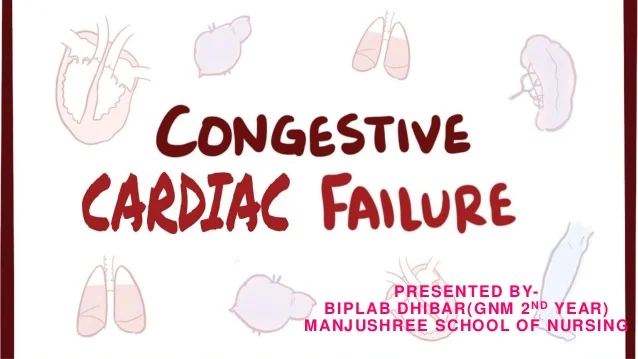Paroxysmal tachycardia is a type of arrhythmia characterized by sudden and rapid heart rate episodes. These episodes, also known as tachycardia attacks, can be unsettling and sometimes alarming for individuals experiencing them. In this comprehensive guide, we delve into the causes of paroxysmal tachycardia, exploring the underlying mechanisms, contributing factors, and strategies for managing this condition effectively.
What Is Paroxysmal Tachycardia?
Before discussing its causes, let’s define paroxysmal tachycardia. Tachycardia refers to a heart rate exceeding the normal range, typically over 100 beats per minute at rest. Paroxysmal tachycardia specifically refers to sudden episodes of rapid heart rate that start and stop abruptly. These episodes can last from a few seconds to several hours and may occur sporadically or with triggers.
Common Types of Paroxysmal Tachycardia
There are several types of paroxysmal tachycardia, each with its own characteristics and underlying causes:
Atrial Fibrillation (AFib): This is the most common type of paroxysmal tachycardia, characterized by rapid and irregular electrical activity in the atria (upper chambers of the heart). AFib episodes can be brief or prolonged and are associated with various risk factors such as age, hypertension, heart disease, and lifestyle factors.
Supraventricular Tachycardia (SVT): SVT includes several types of rapid heart rhythms originating above the ventricles.
Common forms of SVT include atrioventricular nodal reentrant tachycardia (AVNRT) and atrioventricular reentrant tachycardia (AVRT). These episodes are typically paroxysmal, triggered by abnormal electrical pathways in the heart.
Atrial Flutter: Similar to AFib, atrial flutter involves rapid and regular heartbeats originating in the atria. It is characterized by a distinctive “sawtooth” pattern on an electrocardiogram (ECG) and can lead to paroxysmal tachycardia episodes.
Ventricular Tachycardia (VT): While less common in paroxysmal form, VT involves rapid heartbeats originating in the ventricles (lower chambers of the heart). It can be associated with structural heart conditions, electrolyte imbalances, or medication side effects.
Causes of Paroxysmal Tachycardia
The causes of paroxysmal tachycardia can vary depending on the specific type and individual circumstances. Here are some common factors contributing to these rapid heart rate episodes:
Electrical Pathway Abnormalities: In SVT, AVNRT, and AVRT, abnormal electrical pathways or connections in the heart can trigger rapid and chaotic heartbeats. These pathways may be present from birth (congenital) or develop later due to heart conditions or scarring.
Heart Disease: Underlying heart conditions such as coronary artery disease, heart valve disorders, cardiomyopathy, or previous heart surgeries can disrupt normal heart rhythm and contribute to paroxysmal tachycardia.
Hormonal Imbalances: Fluctuations in hormones, especially thyroid hormones (hyperthyroidism), can affect heart rate and rhythm, leading to episodes of tachycardia.
Stress and Anxiety: Emotional stress, anxiety, or panic attacks can trigger tachycardia episodes, particularly in individuals prone to autonomic nervous system imbalances.
Stimulants: Excessive consumption of stimulants such as caffeine, nicotine, or certain medications (e.g., decongestants, bronchodilators) can stimulate the heart and trigger tachycardia episodes.
Electrolyte Imbalances: Abnormal levels of electrolytes like potassium, magnesium, or calcium can disrupt the heart’s electrical activity, leading to tachycardia.
Medication Side Effects: Some medications, including certain antidepressants, asthma medications, and anti-arrhythmic drugs, can cause tachycardia as a side effect or trigger arrhythmias in susceptible individuals.
Alcohol and Substance Use: Excessive alcohol consumption or substance abuse can affect heart rhythm and contribute to tachycardia episodes, especially in individuals with underlying heart conditions.
Structural Heart Abnormalities: Congenital heart defects, heart valve abnormalities, or scar tissue from previous heart surgeries or procedures can create conditions conducive to tachycardia episodes.
Diagnosis And Management of Paroxysmal Tachycardia
Diagnosing paroxysmal tachycardia typically involves a combination of medical history review, physical examination, electrocardiogram (ECG), Holter monitoring (24-hour ECG recording), event monitoring (for sporadic episodes), and occasionally, electrophysiological studies.
Once diagnosed, management strategies for paroxysmal tachycardia may include:
Medications: Anti-arrhythmic medications, beta-blockers, calcium channel blockers, and other cardiac medications may be prescribed to control heart rate and rhythm and prevent tachycardia episodes.
Cardioversion: Electrical cardioversion or chemical cardioversion may be used to restore normal heart rhythm during acute tachycardia episodes.
Ablation Therapy: Catheter ablation procedures can target and eliminate abnormal electrical pathways or tissue causing tachycardia, especially in cases of SVT, AVNRT, AVRT, and some forms of atrial flutter.
Lifestyle Modifications: Adopting a heart-healthy lifestyle, including regular exercise, a balanced diet low in stimulants, stress management techniques, adequate sleep, and avoiding triggers, can help reduce the frequency and severity of tachycardia episodes.
Treatment of Underlying Conditions: Managing underlying conditions such as thyroid disorders, electrolyte imbalances, and heart disease is crucial in preventing tachycardia episodes.
Counseling and Support: For tachycardia triggered by stress, anxiety, or emotional factors, counseling, relaxation techniques, and psychological support may be beneficial.
Conclusion
Paroxysmal tachycardia encompasses various rapid heart rate episodes with diverse underlying causes. Understanding the factors contributing to these episodes is essential in diagnosing and managing tachycardia effectively. From electrical pathway abnormalities and heart disease to hormonal imbalances, stress, and medication side effects, identifying the specific cause is key to developing targeted treatment strategies.
With advances in medical technology, including medication options, ablation therapies, and lifestyle modifications, individuals with paroxysmal tachycardia can achieve effective symptom management and improved quality of life under medical guidance.


